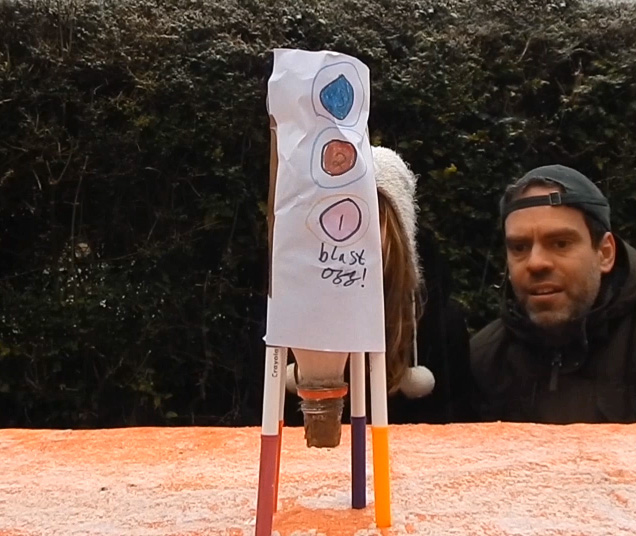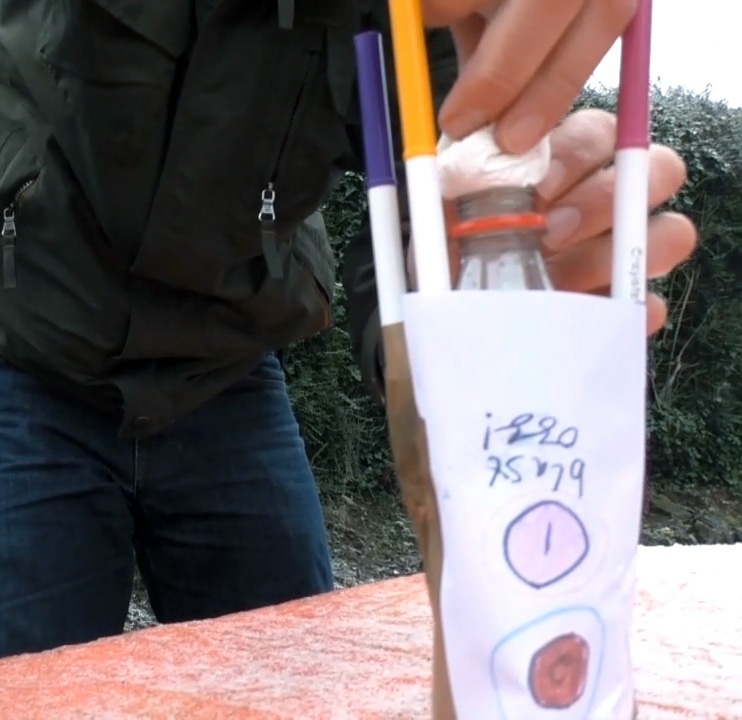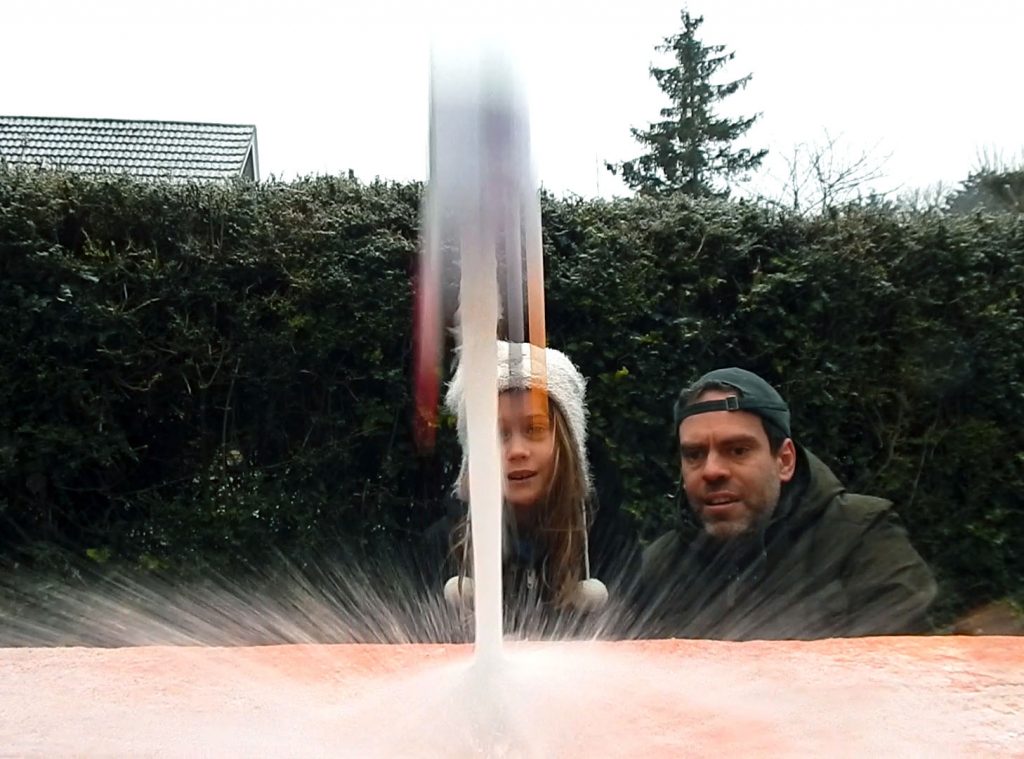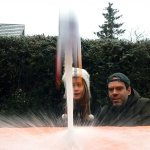We love carrying out science experiments in this household. When asked if we’d consider building our own bottle rocket as part of the BBC’s Terrific Scientific campaign, we leapt at the chance.


Making the bottle rocket was very simple. We used a handful of items that we had hanging round the house.
It was brilliant fun and that’s the great thing about Terrific Scientific. The aim is to get children thinking differently about science and encourage families to carry out simple experiments at home.
We made a short video of our efforts, which we’ve embedded below. It’s only four minutes long and I encourage you to click on play and watch it. I think you’ll be surprised at just how powerful lift-off was.
Here are detailed instructions for making your own rocket. A word of advice: adult supervision is required.
What you will need
- An empty plastic bottle (we’d recommend a 500ml bottle)
- A cork
- Something you can attach to the bottle to make legs that will support the rocket (through trial and error, we found four felt tip pins worked best)
- Parcel tape
- A sheet of kitchen roll
- A tea spoon of bicarbonate of soda
- About 200ml of white vinegar
How you make the rocket
- Using the parcel tape, attach the legs to the rocket so it will stand up upside down. Leave enough space so the cork will fit into the bottom of the bottom.
- If you wish, decorate the bottle so that it looks like a rocket.
- Pour the vinegar into the bottle
- Spoon the bicarbonate of soda into the kitchen roll and loosely fold it up
- Once the bicarbonate of soda is in the kitchen roll, you are ready for launch. It is best to do this outside (watch our video if you don’t believe me!)
Launching the rocket

- Gently push the kitchen roll into the rocket and give it a quick shake.
- Push the cork into the open bottle. Turn the rocket over so it is on its legs and stand back.
- The kitchen roll will dissolve allowing the bicarbonate of soda to mix with the vinegar. This will create a reaction and after a few seconds, boom, your rocket will take off!
A little point I must mention. You are supposed to stand five metres away from the rocket before it launches, something I had missed in the instructions. As you can see from our video, you run a very real risk of getting showered in vinegar if you don’t follow this advice!

What’s happened?
The vinegar and bicarbonate of soda react, creating carbon dioxide and water. Eventually the pressure becomes too much and it forces the cork out of the bottle and blasts the rocket into the air.
Terrific Scientific
You can find out more about Terrific Scientific by visiting the Terrific Scientific hub on the BBC website. You can also follow the hashtag #terrificscientific on social media.
Do you carry out science experiments with you kids? Will you attempt a few #terrificscientific experiments yourself? Maybe you already have done? If so, please do leave a comment below. I’d love to know what you get up to.
Disclosure: This post was produced in partnership with the BBC to promote the Terrific Scientific campaign.






